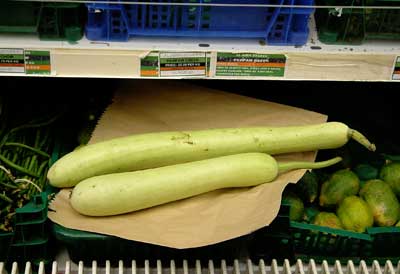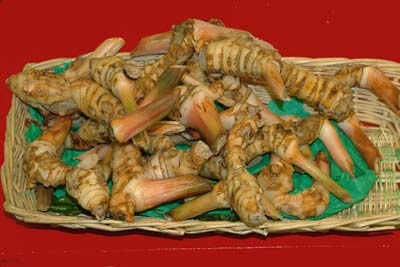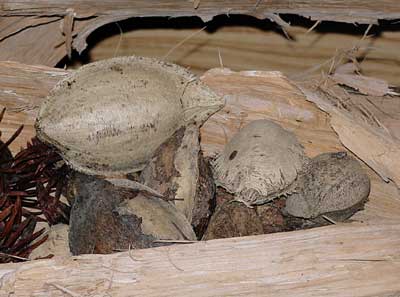Black caraway, the seeds of which have a warm odour and an aromatic, pungent and slightly bitter flavour.

A bottle gourd or calabash cucumber which is pale green on the outside, creamy, yellowish-white inside and looks like a cucumber with a bulge at one end. Only the very young gourds are used for cooking. When older they are most commonly known as calabash and develop a hard, woody shell which may be used for making bowls and musical instruments.

Galangal. The rhizome of a plant of the ginger family, although it is smaller and more shrivelled. It has more translucent, flesh-coloured skin than the rhizome of ginger. It is peeled and grated or thinly sliced and used in the same way that fresh ginger is used, but has a slightly more complex flavour reminiscent of camphor. Greater galangal resembles a cross between ginger and pepper; lesser galangal is more pungent, with cardamom and eucalyptus flavours, whilst kempferia is the strongest.

Tropical almond. The fruit looks similar to the almond and is usually pale green, though it may be reddish-purple. There is a fibrous seed containing a pointed kernel, or nut. It can be eaten fresh and raw, or cooked. It is sometimes difficult to remove the fibrous seed without damaging the nut. There is a thin covering of skin on the nut, and it is worth removing it as it can be very astringent. It is much prized in the Moghul cooking of northern India, they are eaten fresh or used in badam barfi, fudge-like sweets, or used to thicken sauces in dishes such as korma. They are grown in Kashmir and Afghanistan as they do not grow well in tropical regions. Elsewhere, cashew and other nuts are substituted.